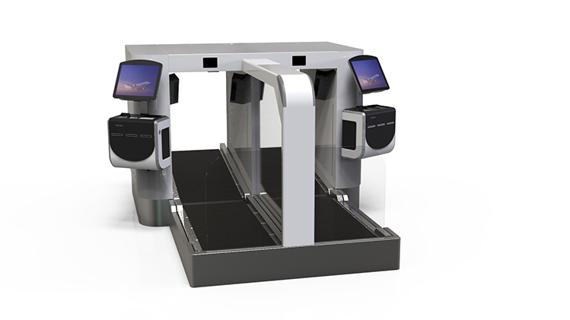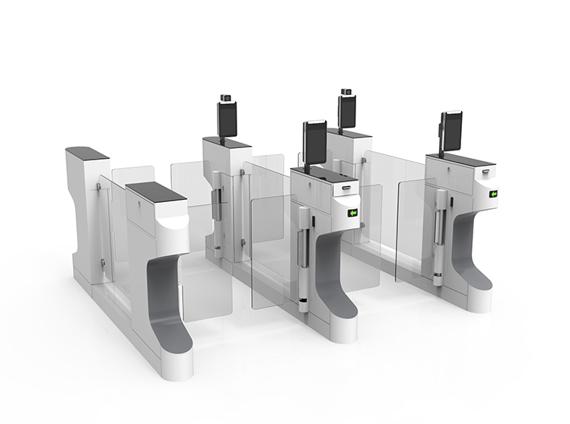Delivering a contactless journey through automation and self-service
Source: ACI Airport Business Magazine
An interview with Prof. Zhiqiang Chen from Tsinghua University, Chairman, President and Chief Executive Officer, NUCTECH. By Ross Falconer
Amid the COVID-19 pandemic, passenger processes throughout the airport are being transformed to ensure social distancing, reduce face-to-face interaction, and minimise people/surface contacts.
“Self-service and automated solutions are gaining momentum at airports to deliver a ‘contactless’ passenger journey, allowing travellers to avoid contact as much as possible while putting them in charge of their own journey through the airport,” explains Prof. Zhiqiang Chen from Tsinghua University, Chairman, President and Chief Executive Officer, NUCTECH.
Self-service bag drop
Well before the pandemic, the global aviation industry has invested in self-service facilities as an alternative to manual processes. Such self-service devices are usually simple to use and convenient, making it possible for passengers to check-in any time with minimal human interaction.
“As the IATA Global Passenger Survey indicated, an ever-increasing number of passengers prefer self-service facilities to improve their travel experience,” says Prof. Chen. “Today, self-service facilities also offer a variety of benefits for airports to fight against the pandemic. They could limit the spread of virus by reducing passenger queuing and keeping social distancing rules, at the same time allowing airports to cater to passenger fluctuations with flexible staffing on a daily basis and protect the health of frontline officials.”
Against this backdrop, NUCTECH has launched a self-service bag drop system – WeDrop – which is designed to make the baggage checking process easier and quicker, with an intuitive touchscreen, simple user interface, built-in ID reader, and a printer option. “Moreover, it can automate detection of out-of-gauge and overweight luggage and support self-payment for excess luggage, providing airports with a fully automated bag drop solution,” Prof. Chen explains. “Available in various configurations, WeDrop can be integrated into existing infrastructure or be used in brand-new terminals, enabling a quick, flexible and touchless passenger experience.”

NUCTECH has launched a self-service bag drop system – WeDrop – which is designed to make the baggage checking process easier and quicker, with an intuitive touchscreen, simple user interface, built-in ID reader, and a printer option.
Automated access control
Among the touchpoints along the passenger journey, access control and verification before the security checkpoint or boarding gate frequently involves high-touch and close human interaction, which is naturally prone to build-up of queues. In this case, staff members who routinely come into close contact with passengers may be exposed to high risks of infection, making the airport operations vulnerable to the spread of virus.
“With the health and wellbeing of passengers and staff in mind, some airports are turning to automation to reduce contact between passengers and airport staff, such as the automated e-gate,” says Prof. Chen. “The self-scan will replace the need for manual scanning and checking of passenger travel documents and boarding passes, streamlining the overall travel experience by automating the validation procedure.”
To this end, NUCTECH has introduced the WePass smart access control system to airports, while enhancing security and safety through integrating explosive trace detector and temperature checking solutions together. “In particular, it may act as a highly versatile automatic gate, enabling automatic fever alerts, explosive trace detection and identity verification, all in just one go,” Prof. Chen explains. “When passing through WePass, passengers are automatically screened to see if their body temperature is abnormally high, which may be a sign of possible infection. At the same time, the travel documents are scanned for authenticity and screened for traces of explosive residue with the built-in trace detector. With WePass in place, access control would serve as an effective line of defense to guard against infectious disease and security threats, while serving as an efficient gateway for passenger flows.”

NUCTECH has introduced the WePass smart access control system to airports, while enhancing security and safety through integrating explosive trace detector and temperature checking solutions together.
Upgrade the security checkpoint
When it comes to the security checkpoint, unhappy experiences can entail the removal of shoes, belts and coats, taking liquids, laptops and power banks out of bags for separate screening, long queues in preparation stations, and congested baggage re-composure areas, sometimes coupled with a pat-down or a manual search of the hand bag.
“The typical checkpoint protocol brings about tough challenges to passengers and airport staff during the pandemic, due to the high contact nature of the screening process and the tendency for congestion and crowding,” Prof. Chen comments. “Nonetheless, the pandemic also presents a unique opportunity for airports to explore and trial new technologies when the facilities are not used at full capacity. More and more advanced technologies have been utilised to facilitate a touchless and more efficient passenger experience and reassure passengers and airport staff of the safety and security of the airport operations.”
Approved by ECAC at EDSCB standard C3, the Kylin Ti X-ray CT inspection system can enable liquids and laptops to be left inside passenger bags with its powerful material discrimination capability. “Fewer trays are needed and less contact among passengers, staff and the surface of trays,” says Prof. Chen. “Moreover, the high throughput could help airports maintain a steady passenger flow and make it easier to avoid any congregation of people.”
Millimetre wave body scanners have been employed by many airports as a primary or secondary passenger screening technology. “As a better alternative to a traditional metal detector, it not only improves detection of non-metal items, but also enables a targeted secondary search by highlighting the position of concealment under clothing on a generic figure,” Prof. Chen adds.
As for the automatic tray return system, it could transport the baggage trays automatically, eliminating the need for airport staff to move them back and forth manually, while allowing for multiple passengers with their parallel preparation to speed-up the throughput of the checkpoint.
More and more advanced technologies have been utilised to facilitate a touchless and more efficient passenger experience and reassure passengers and airport staff of the safety and security of the airport operations.
“Furthermore, the multiplexing technology brings the central image processing (CIP) to the checkpoint, which allows security staff, previously confined to the scanner, to be transferred to a remote and quiet place away from the hustle and bustle of checkpoints, ensuring social distancing is properly observed between passengers and staff,” says Prof. Chen.
Last, but not least, Artificial Intelligence (AI) is also playing an increasingly vital role in transformation of the security process by empowering the whole system with more automation and intelligence. “AI-enabled algorithms have greatly improved the detection capabilities of millimetre wave body scanners and CT scanners with automatic recognition of targeted items, and also delivered very low false alarm rates, demonstrating the potential for reduction of high-contact re-checks,” Prof. Chen explains. “This can significantly speed-up passenger flow and reduce unnecessary interactions between passengers and staff, while improving security levels in an efficient and effective way.”
In light of the ongoing COVID-19 pandemic, health and security will remain the top priorities of the aviation community. To facilitate travel and improve passenger experience remains at the heart of the restart of the aviation industry.
Prof. Chen emphasizes the importance of airports and other stakeholders working together to apply innovative security and health measures to support airport operations, as well as to eliminate the vulnerability against communicable diseases today and tomorrow. “Sooner or later, the airports and aviation industry will recover from the current crisis. It is time to reshape the future of air travel and lay the foundations for its future growth by piecing together hygiene measures, health screening technologies, self-service and automated solutions to better adapt to the post-COVID-19 era.”